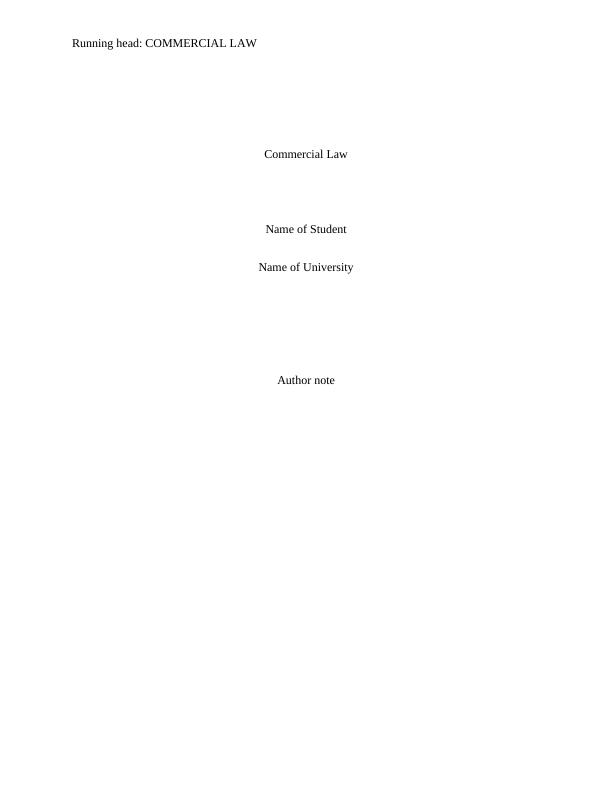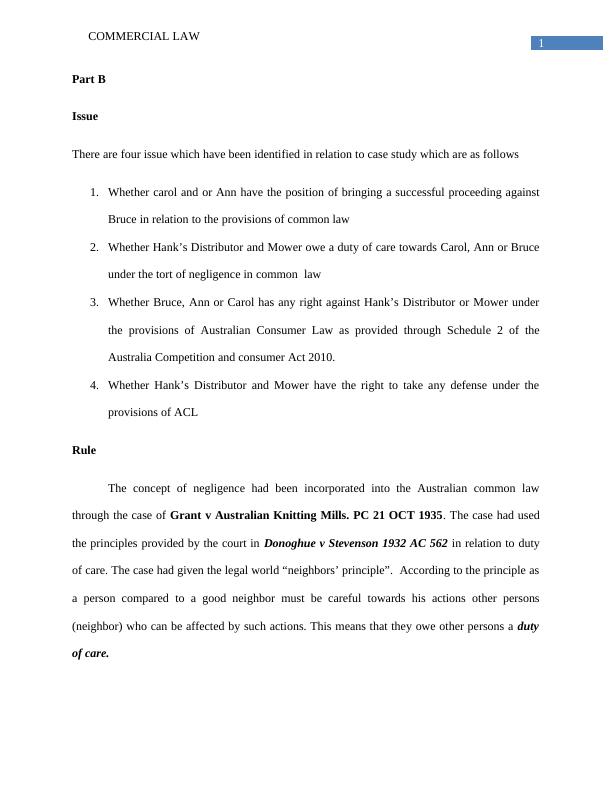Ask a question from expert
BULAW5914 Commercial Law - Case Study
8 Pages1653 Words78 Views
Commercial Law (BULAW5914)
Added on 2020-05-28
BULAW5914 Commercial Law - Case Study
Commercial Law (BULAW5914)
Added on 2020-05-28
BookmarkShareRelated Documents
End of preview
Want to access all the pages? Upload your documents or become a member.
COMMERCIAL LAW 1 Running Head: Common Law
|8
|1447
|76
Negligence and Pure Economic Loss in Construction: A Case Study Analysis
|10
|2398
|112
Commercial Law Issues - Assignment
|13
|2932
|18
The Tort of Negligence Law: Assignment
|7
|1186
|242
Tort Law: Establishing Negligence and Defense of Volenti Non Fit Injuria
|9
|2482
|62
LAW8500 Australian Commercial and Corporations Law Issue 2022
|13
|3509
|13


